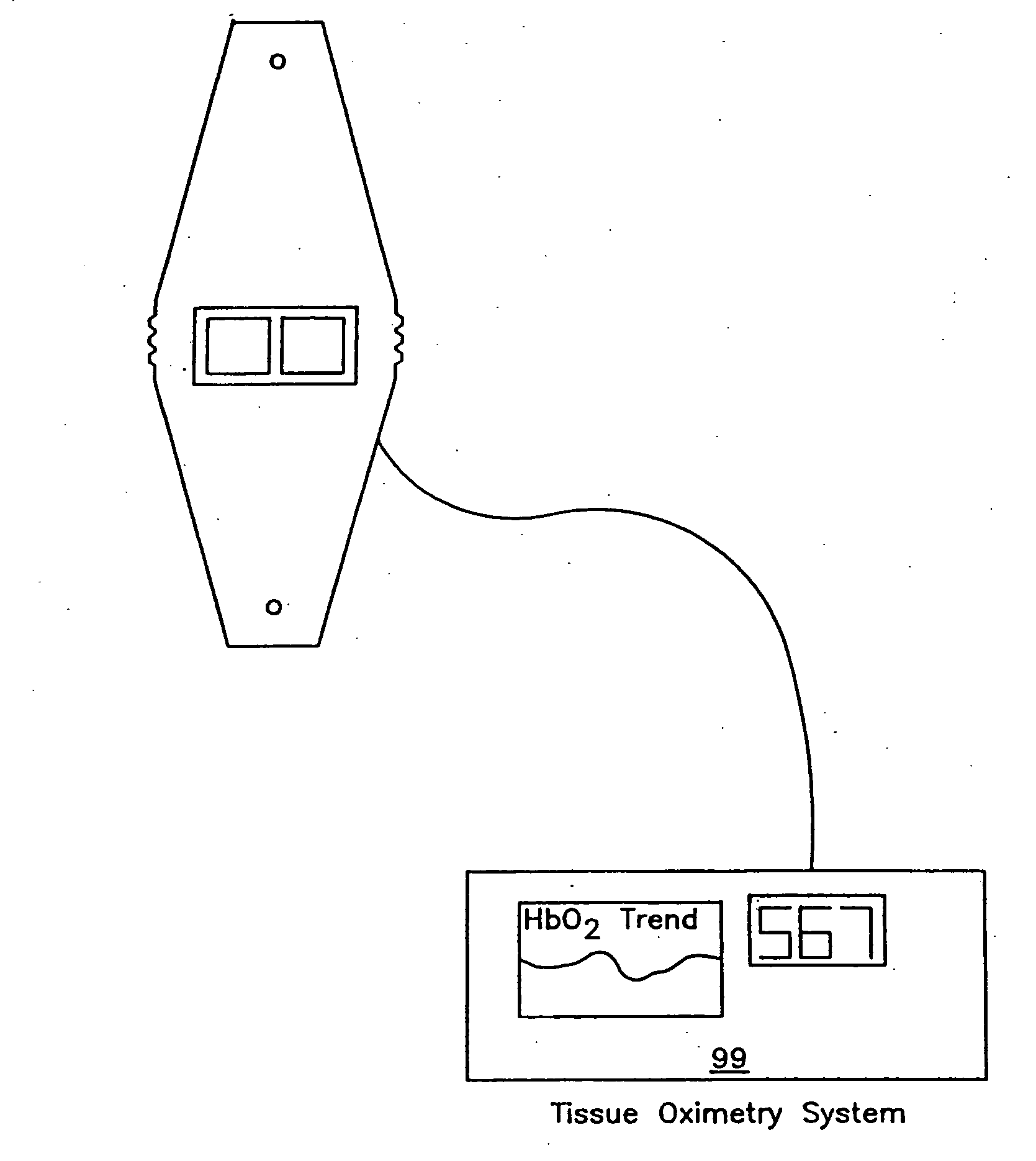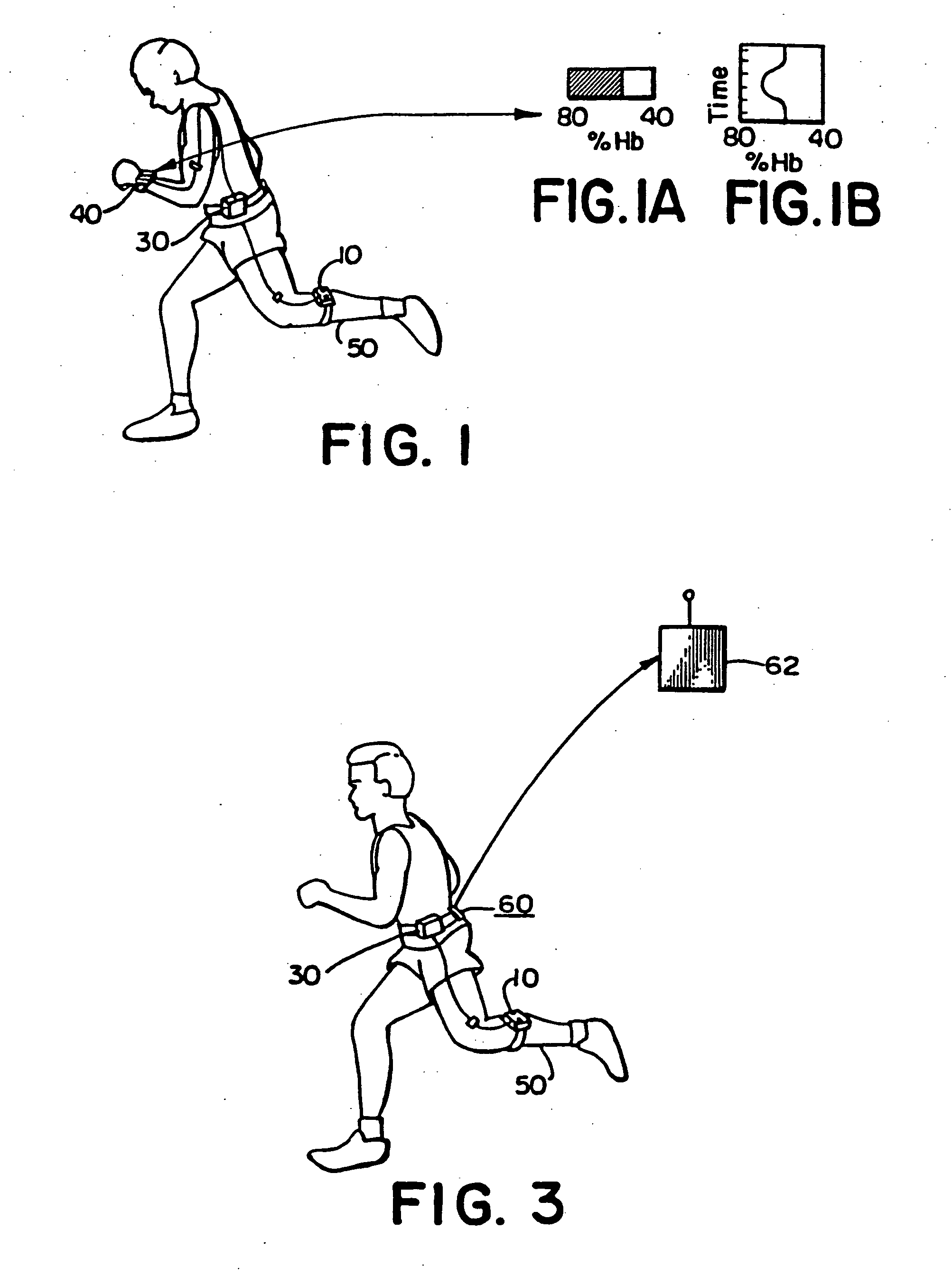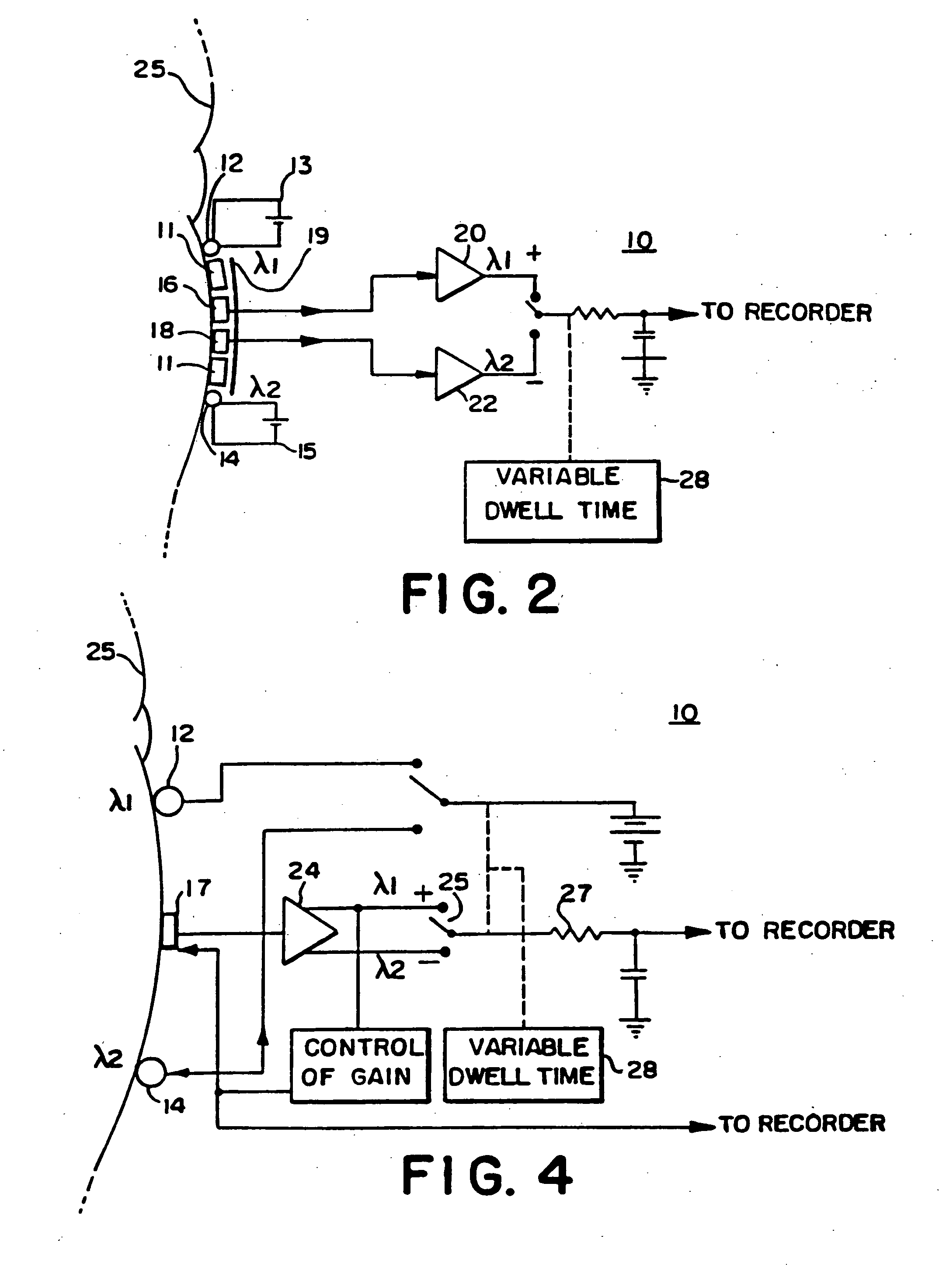Hemoglobinometers and the like for measuring the metabolic condition of a subject
a technology of hemoglobinometer and metabolic condition, which is applied in the field of wearable apparatus, can solve the problems of limited heartbeat and blood pressure data, data that does not reflect peripheral circulatory capacity or the oxygenation state of specific muscle tissue, and the efficiency at which he/she uses oxygen, so as to minimize any performance impairment
- Summary
- Abstract
- Description
- Claims
- Application Information
AI Technical Summary
Benefits of technology
Problems solved by technology
Method used
Image
Examples
Embodiment Construction
[0101] A preferred embodiment of the apparatus of the present invention is illustrated in FIG. 2. In this embodiment an electro-optical pickoff detector unit 10 is worn on the leg of the exercising subject 50. It is preferred that the weight of the detector be kept to a minimum so that hindrance to a competing athlete is negligible. In a preferred embodiment, the detector will be housed in a flexible array constructed from a suitable non-irritating, lightweight material.
[0102] Power is provided to the detector unit 10 from a replaceable battery pack 30. The replaceable power pack 30 is preferably designed to be of minimal dimensions and weight. Most preferably, the battery pack 30 would be designed to last only for the duration of the activity, e.g., several minutes of sprinting, several hours for a marathon runner, etc. In competitive sports applications, the life of the battery pack is preferably based upon the interval between substitutions or other interruptions between periods...
PUM
 Login to View More
Login to View More Abstract
Description
Claims
Application Information
 Login to View More
Login to View More - R&D
- Intellectual Property
- Life Sciences
- Materials
- Tech Scout
- Unparalleled Data Quality
- Higher Quality Content
- 60% Fewer Hallucinations
Browse by: Latest US Patents, China's latest patents, Technical Efficacy Thesaurus, Application Domain, Technology Topic, Popular Technical Reports.
© 2025 PatSnap. All rights reserved.Legal|Privacy policy|Modern Slavery Act Transparency Statement|Sitemap|About US| Contact US: help@patsnap.com



